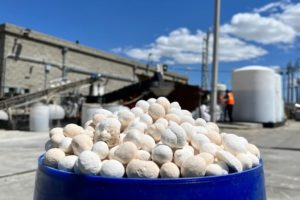补救支出的增加成比例to the Scarcity of Water
The multibillion dollar market for remediation of groundwater and soil will continue to grow. Fueling this growth is a reduction in available water per capita.
By the year 2030, the world population will rise to 8.3 billion from 7.1 billion today. Demand for water will increase 40 percent between 2011 and 2030. The population across the globe will need 6,900 billion cubic meters (BCM) of water in 2030. This total exceeds current sustainable water supplies by 40 percent. By 2030, the OECD estimates that nearly one-half of the world population will live in areas of severe water stress.
The remediation of contaminated soil and water will assume even greater importance as the stress on resources grows. The biggest rate of growth will be in developing countries such as China. In countries where much has already been spent on remediation, the rate of growth will slow.
In the U.K. over the five years through 2017, site remediation industry revenue will continue to increase but at a lesser rate than in the previous five-year period, which benefited from the spike in activity devoted to preparing sites for the 2012 Olympic Games. The outlook for the remediation industry is positive because housing and commercial developments across the U.K. will continue to need soil and groundwater remediation services. A greater number of abandoned industrial sites are being remediated in preparation for building construction. The scarcity of available land is a driver in much of Europe.
美国仍然是一个强大的市场地下水cleanup. It will cost between $110 billion and $127 billion to clean up the 126,000 sites that have contaminated groundwater. Approximately 10 percent of the groundwater sites are considered complex. They will not be cleaned up in the next 50 to 100 years, because innovative technologies to treat them successfully to drinking water standards do not yet exist. Many sites considered remediated and "closed" still have contamination requiring oversight.
China will be among the top markets over the next ten years. The country has lower rainfall per capita than the average country. Much of the water supply is contaminated. There is a dedication to cleanup but past investment has been meager.
Remediation will not be limited to sites which are already contaminated. The Fukishima power plant catastrophe is an example of the continuing contamination. Military activity in the last century has caused considerable contamination which has yet not been addressed. The conflicts in Africa and the Middle East continue to add new contamination sites.
Source:The McIlvaine Company







